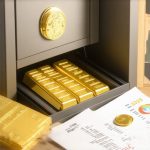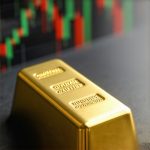Understanding Gold ETFs and Their Benefits
Gold Exchange-Traded Funds (ETFs) have become increasingly popular among investors looking to add precious metals to their portfolios. These investment vehicles allow individuals to gain exposure to gold without the complexities of storing physical gold. But before diving into the world of gold ETFs, it’s essential to understand the critical considerations that can impact your investment decisions.
Liquidity and Market Accessibility
One of the primary benefits of investing in gold ETFs is their liquidity. Unlike physical gold, which requires buyers to find a market or dealer, gold ETFs can be traded easily on stock exchanges during market hours. This accessibility allows investors to buy and sell their shares quickly, making it a convenient option for those looking to capitalize on short-term market movements. Additionally, the price of gold ETFs typically tracks the spot price of gold closely, providing a straightforward method for investors to gauge the performance of their investments.
Cost Considerations and Expense Ratios
When evaluating gold ETFs, understanding the costs associated with them is crucial. Most ETFs charge an expense ratio, which is a percentage of the fund’s total assets used for management and operational expenses. Lower expense ratios can significantly impact your overall returns over time. Therefore, it is advisable to compare different ETFs and select one with a competitive expense ratio. Furthermore, investors should consider any trading fees that may apply when buying or selling ETF shares, as these can add up and diminish returns.
Tax Implications of Gold ETF Investments
Investing in gold ETFs also comes with specific tax considerations. Depending on your jurisdiction, gold ETFs might be subject to capital gains taxes upon selling. Additionally, some gold ETFs may be classified as collectibles, which could lead to higher tax rates. It’s crucial to consult a tax professional to understand the implications of investing in gold ETFs within your overall tax strategy. This knowledge can help you make informed decisions and avoid unexpected tax liabilities.
Diversification and Portfolio Strategy
Incorporating gold ETFs into your investment strategy can enhance diversification. Gold often behaves differently than stocks and bonds, making it an effective hedge against market volatility and inflation. By adding gold ETFs to your portfolio, you can potentially reduce overall risk while still aiming for solid returns. However, it’s essential to assess your investment goals and risk tolerance before integrating gold ETFs. A well-balanced portfolio typically includes a mix of asset classes, and gold can serve as a valuable component in times of economic uncertainty.
Researching Gold ETF Options
Before committing to a gold ETF, thorough research is necessary. Look into the fund’s performance history, the reputation of the fund manager, and the underlying assets held by the ETF. Some ETFs may invest directly in physical gold, while others may use gold futures or options. Understanding these differences can help you choose an ETF that aligns with your investment philosophy. For more insights on how to approach gold ETFs, consider checking out this guide on maximizing returns with gold ETFs.
Evaluating Different Types of Gold ETFs
When considering gold ETFs, it’s vital to understand the different types available in the market. Some ETFs directly hold physical gold bars, while others may invest in gold futures contracts or mining stocks. Each type has its advantages and disadvantages. For instance, physical gold ETFs provide direct exposure to gold prices but may involve higher management fees. On the other hand, ETFs that invest in mining stocks may offer higher growth potential but come with increased volatility.
Understanding Gold Mining ETFs
Gold mining ETFs focus on investing in companies that mine gold. These funds can provide leveraged exposure to the price of gold since mining companies tend to see their stock prices rise faster than gold prices in a bullish market. However, the risk is also higher due to factors such as operational risks, regulatory issues, and fluctuating production costs. For a comprehensive look at the best gold mining stocks to consider for your portfolio, visit this detailed guide on gold mining stocks.
Diversifying with Gold ETFs
Incorporating gold ETFs into your investment portfolio is an effective way to diversify. Gold has historically shown a negative correlation with stocks, meaning when stock prices fall, gold prices often rise. This property makes gold an excellent hedge against market downturns and inflation. To achieve a balanced investment approach, consider allocating a portion of your portfolio to gold ETFs alongside traditional stocks and bonds.
Assessing Performance and Tracking Gold Prices
Understanding how to evaluate the performance of gold ETFs is crucial for investors. Track the ETF’s performance against the actual price of gold to ensure the fund is effectively mirroring gold’s movements. Tools like price charts and performance reports can provide insights into how well your investment is doing over time. Additionally, staying informed about market trends affecting gold prices, such as geopolitical tensions and economic indicators, is essential. For more on how to analyze gold price trends like a pro, check out this analysis guide.
The Impact of Global Economic Conditions on Gold ETFs
Gold often serves as a safe-haven asset during times of economic uncertainty. Factors such as rising inflation, currency devaluation, or geopolitical instability can drive investors toward gold, thereby increasing its price. Monitoring these global economic conditions can help you make informed decisions about when to buy or sell your gold ETF shares. Understanding how gold prices are affected by global supply and demand is crucial for navigating your investment effectively.
Long-Term vs. Short-Term Investment Strategies
When investing in gold ETFs, deciding between a long-term or short-term strategy is key. Long-term investors may focus on the overall trend of gold prices, choosing to hold their investments through market fluctuations. In contrast, short-term investors might capitalize on price movements and market volatility. Regardless of your strategy, it’s essential to have a clear plan and stick to your investment goals.
Monitoring Your Gold ETF Investment
Consistent monitoring of your gold ETF investments is vital. Regularly review your portfolio to assess whether your investments align with your financial goals. This practice allows you to make informed adjustments based on market conditions or personal financial needs. Additionally, staying connected with reputable sources of financial news can keep you updated on changes in the gold market.
Understanding the Benefits of Gold ETFs for Diversification
Gold ETFs are an excellent tool for diversification in your investment portfolio. By including gold, which historically moves inversely to stocks, you can mitigate risk. This strategy is particularly beneficial during market volatility, where traditional assets may falter. Moreover, gold ETFs allow for easy entry into the gold market without the need for physical storage or security concerns, making them a hassle-free investment option.
How Gold ETFs Compare to Physical Gold Investments
While physical gold provides a tangible asset, gold ETFs offer liquidity and ease of trading. You can buy and sell ETF shares on the stock exchange just like any other stock, making it simpler to manage your investments. Additionally, gold ETFs often have lower fees compared to the costs associated with buying, storing, and insuring physical gold. For those interested in understanding the nuances of investing in gold bullion, this comprehensive guide covers essential aspects.
Evaluating the Risks Associated with Gold ETFs
Investing in gold ETFs is not without risks. While they provide exposure to gold prices, factors such as market volatility, management fees, and tracking errors can impact your returns. It’s important to assess the fund’s performance against benchmarks to understand how well it reflects the price of gold. For insights on how to analyze gold price trends effectively, check out this analysis guide.
Understanding Tax Implications of Gold ETFs
Gold ETFs can have different tax implications compared to other investment vehicles. In many jurisdictions, gains from gold ETFs are taxed as collectibles, which can lead to higher capital gains tax rates. Familiarizing yourself with the specific tax regulations that apply to your investments is crucial. Consulting a financial advisor can provide tailored advice based on your situation.
Strategies for Choosing the Right Gold ETFs
When selecting gold ETFs, consider factors such as the fund’s expense ratio, historical performance, and the underlying assets it holds. Funds that track gold prices directly may offer more stability compared to those investing in mining stocks, which can be subject to higher volatility. For further insights into evaluating gold stocks, visit this informative piece that outlines key strategies.
Long-Term Investment Outlook for Gold ETFs
The long-term outlook for gold ETFs remains positive, particularly in the context of economic uncertainty and inflation concerns. As more investors turn to gold as a safe haven, the demand for gold ETFs is likely to increase. Staying informed about market trends and economic indicators can help you make strategic decisions regarding your investments.
Conclusion: Making Informed Decisions about Gold ETFs
Investing in gold ETFs can be a lucrative addition to your portfolio if approached thoughtfully. By understanding the benefits, risks, and strategies involved, you can position yourself to maximize your investment potential. Continually educating yourself on market dynamics and maintaining a diversified portfolio will enhance your ability to navigate the complexities of gold investing.
Future Trends in Gold ETFs: What Investors Should Anticipate
The landscape of gold ETFs is continuously evolving, influenced by market dynamics and investor behavior. As economic uncertainties loom, more investors are likely to flock toward gold ETFs, appreciating their role as a hedge against inflation and currency devaluation. Understanding these trends will be instrumental in making informed investment decisions.
Increased Demand for Gold ETFs Amid Economic Instability
In times of economic instability, such as recessions or geopolitical tensions, gold often shines as a safe haven. Investors seeking stability tend to increase their allocations in gold ETFs, driving up demand. This trend is anticipated to continue, particularly as central banks increase their gold reserves, impacting overall market sentiment. For a deeper dive into how central bank actions influence gold prices, refer to this insightful article.
Innovations in Gold ETF Structures
As the gold investment landscape matures, we can expect innovations in ETF structures aimed at enhancing investor returns. New products may emerge that offer exposure not just to physical gold, but also to related sectors such as gold mining and exploration companies. This diversification can appeal to investors looking for higher growth potential.
Integration of Technology in Gold Trading
Technology is playing a pivotal role in shaping the future of gold trading. Platforms that facilitate fractional ownership of gold ETFs or provide real-time market analytics can make investing more accessible and efficient. Moreover, blockchain technology may be integrated to ensure transparency and security in gold transactions, further boosting investor confidence.
Impact of Global Economic Factors on Gold ETFs
Global economic factors such as inflation rates, interest rates, and currency fluctuations significantly affect gold prices. As inflation concerns rise, the allure of gold as a hedge becomes more pronounced. Investors should remain vigilant about economic indicators and adjust their gold ETF strategies accordingly. For insights on analyzing gold demand trends, check out this guide that outlines essential metrics for strategic investing.
Understanding Global Supply and Demand Trends
Supply and demand trends play a crucial role in determining the price of gold. Factors such as mining output, geopolitical risks in gold-producing countries, and technological advancements in mining can influence supply. Investors should keep abreast of these factors to anticipate market movements. For a comprehensive understanding, read this detailed analysis.
Conclusion: Preparing for the Future of Gold Investing
As the gold market evolves, staying informed about trends and innovations is essential for successful investing. By understanding future projections and incorporating strategic insights, you can position yourself effectively in the gold ETF market. Whether you’re a seasoned investor or just starting out, being proactive about market changes will enhance your investment outcomes.
Frequently Asked Questions About Gold ETFs
What are gold ETFs and how do they work?
Gold ETFs (Exchange-Traded Funds) are investment funds that hold gold assets, allowing investors to buy shares that represent a fraction of the fund’s total gold holdings. They provide an easy way to invest in gold without the need to physically own it, offering liquidity and convenience in trading on stock exchanges.
What are the benefits of investing in gold ETFs?
Investing in gold ETFs offers several benefits, including diversification of your investment portfolio, hedging against inflation, and the ability to trade easily like stocks. They also tend to have lower fees compared to traditional gold investments, such as physical bullion or coins.
How do gold ETFs perform compared to physical gold?
Gold ETFs generally track the price of physical gold closely, but they may experience slight variations due to management fees and operational costs. However, they provide a more flexible investment option compared to holding physical gold, which involves storage and insurance costs.
Are gold ETFs a good hedge against inflation?
Yes, gold ETFs are often viewed as a strong hedge against inflation. As the value of currency decreases, investors typically turn to gold to preserve their purchasing power, which can lead to an increase in gold prices and, consequently, gold ETF values.
Can I buy gold ETFs in a retirement account?
Yes, many investors choose to include gold ETFs in their retirement accounts, such as IRAs. This can provide a way to diversify retirement portfolios and protect against economic downturns while still enjoying tax advantages.
How are gold ETFs taxed?
Gold ETFs are generally taxed as collectibles, which means they are subject to a maximum capital gains tax rate of 28% when sold for a profit. It’s essential to consult a tax professional for personalized advice based on your specific circumstances.
What factors influence the price of gold ETFs?
The price of gold ETFs is influenced by several factors, including global gold demand and supply, economic conditions, inflation rates, interest rates, and geopolitical tensions. Investors should monitor these indicators to make informed decisions.
How do I choose the right gold ETF for my investment strategy?
When choosing a gold ETF, consider factors such as the fund’s expense ratio, liquidity, tracking error, and the quality of gold holdings. Researching the fund’s management team and historical performance can also provide valuable insights.
Are there risks associated with investing in gold ETFs?
Yes, like any investment, gold ETFs come with risks, including market volatility, management fees, and the potential for lower returns compared to other asset classes. Understanding these risks is crucial before investing.
How can I stay updated on gold ETF trends?
To stay informed on gold ETF trends, follow financial news outlets, subscribe to investment newsletters, and utilize research tools that provide insights into market movements and economic indicators affecting gold prices.
Authority Resources for Gold Investment Insights
For more in-depth knowledge and expert analysis on gold ETFs and investing in gold, consider the following trusted resources:
- World Gold Council – An authoritative source for gold market insights, research, and data.
- Investopedia – Offers comprehensive articles and tutorials on investing in gold and ETFs.
- Morningstar – Provides investment research and analysis tools for ETFs and other assets.
- ETF.com – A valuable resource dedicated to ETF news, education, and analysis.
- Kitco – A leading resource for precious metals news, market data, and analysis.
Final Thoughts on Gold ETFs and Future Investments
The future of gold ETFs looks promising, driven by innovations and growing investor interest in gold as a safe haven asset. By understanding market dynamics, staying informed about trends, and leveraging strategic insights, investors can enhance their portfolios and strategically position themselves in the evolving gold market. Whether you’re a seasoned investor or a newcomer, gold ETFs can play a critical role in achieving your financial goals.










